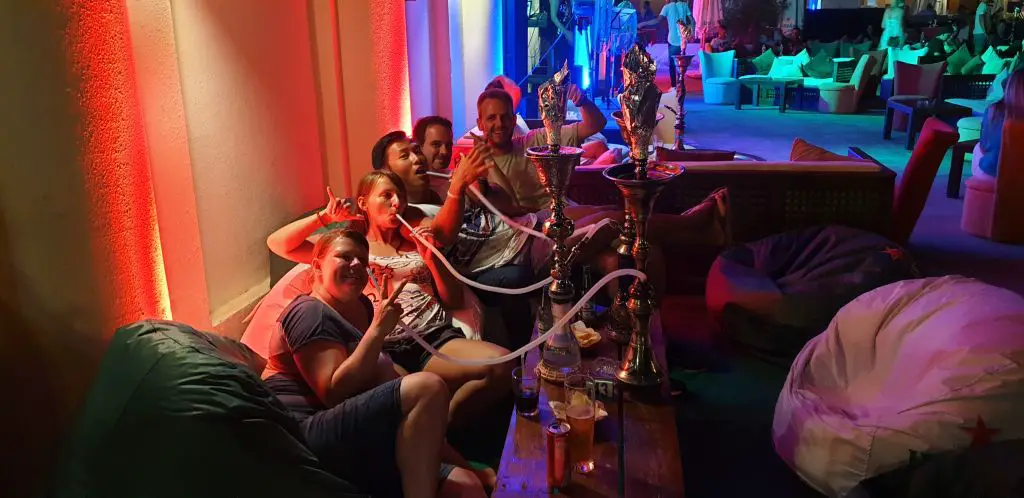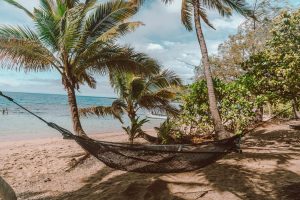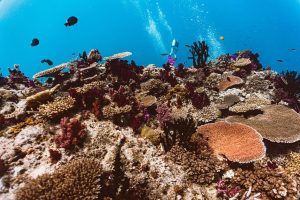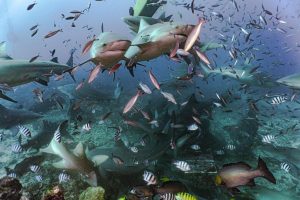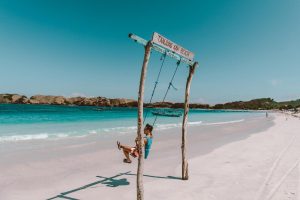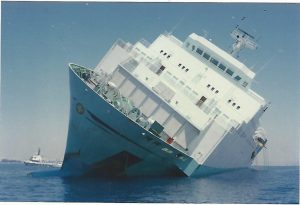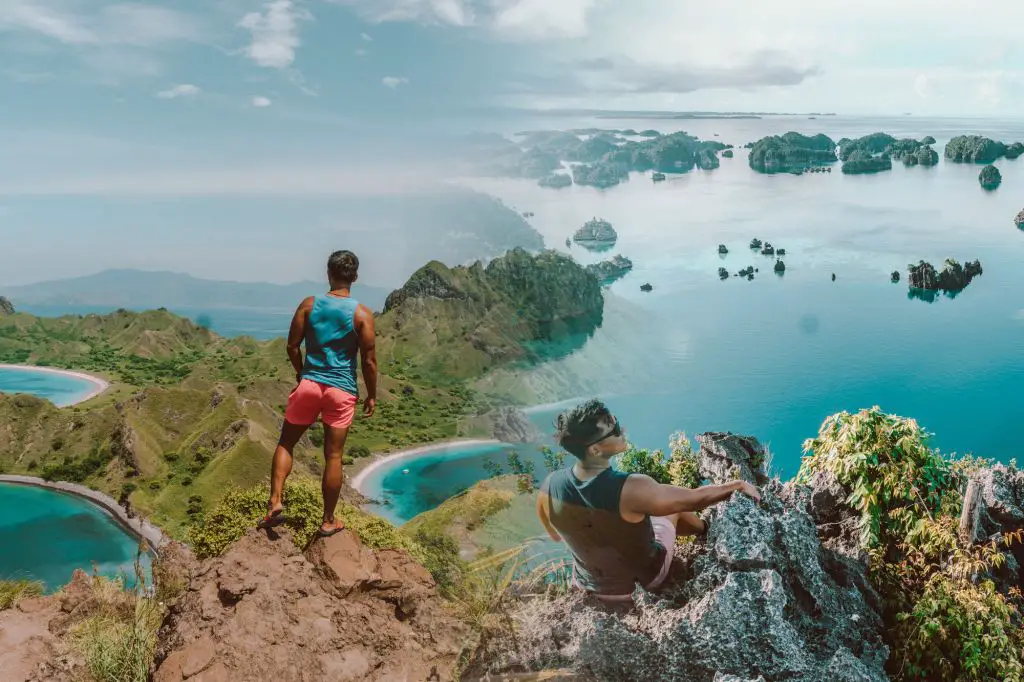Egypt is one of my favorite countries when it comes to diving. The stunning contrast between turquoise sea, desert, and towering mountains is just one of the most stunning landscapes in the world. Then there is everything below the water with some of the most vibrant corals you’ll see in the world. I’ve had plenty of fun and unforgettable times diving in Dahab and the Sinai region of Egypt.
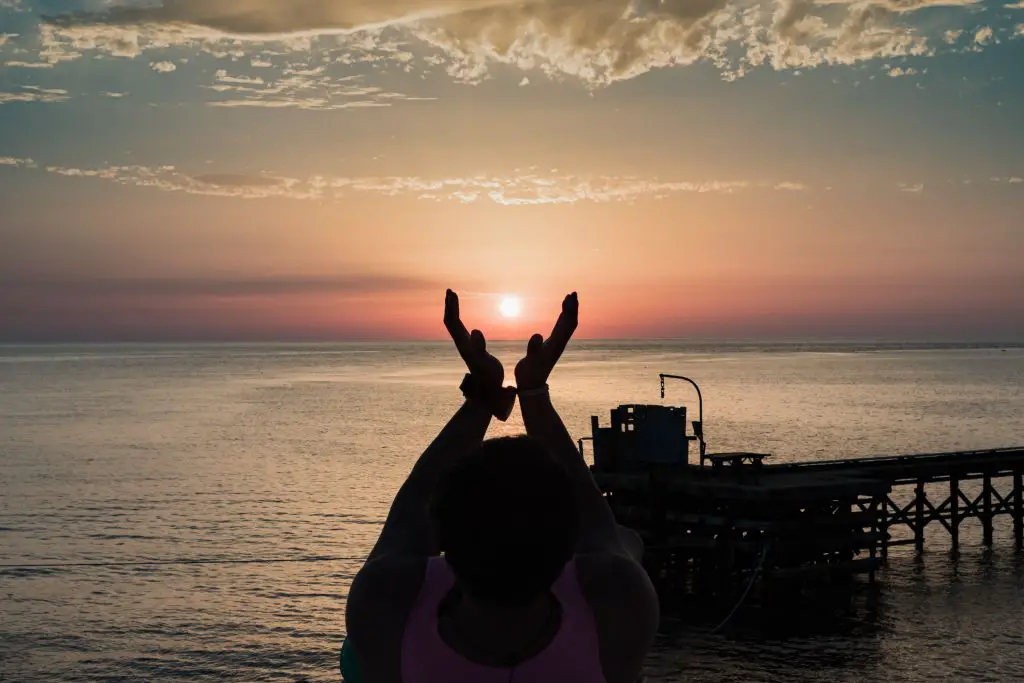
However, all the divemasters in Dahab kept telling me I had to visit Egypt’s very south to have the best diving. I’m a simple man and when I hear good advice, I take it. After lots of research, I decided to take a liveaboard visiting the highlights of Egypt’s south Red Sea visiting Brothers, Daedalus, and Elphinstone. This is highlighted as the shark itinerary with hammerheads being the main highlight of the trip. I booked my trip with Discovery Divers aboard their Samira liveaboard boat. It was an absolute blast with some fantastic diving. If you’ve never been on a liveaboard before, I’d highly recommend reading my liveaboard dive guide and then booking a trip of your own! Also, if you’re worried about safety in Egypt, make sure to read my safety guide for Egypt as well.
Diving on the Samira Discovery Liveaboard
Discovery liveaboards is one of the many providers of liveaboards in the Red Sea. They have a fleet of two boats (the Amelia and Samira). I was pretty set on doing the Brothers, Daedalus, Elphinstone (BDE) itinerary and the Samira just had the dates that worked best for me, as well as being one of the most reasonably priced boats. They do a bunch of other itineraries leaving from Marsa Alam including deep south Fury shoals and St Johns. I went in mid June which is right before the peak season summer months.
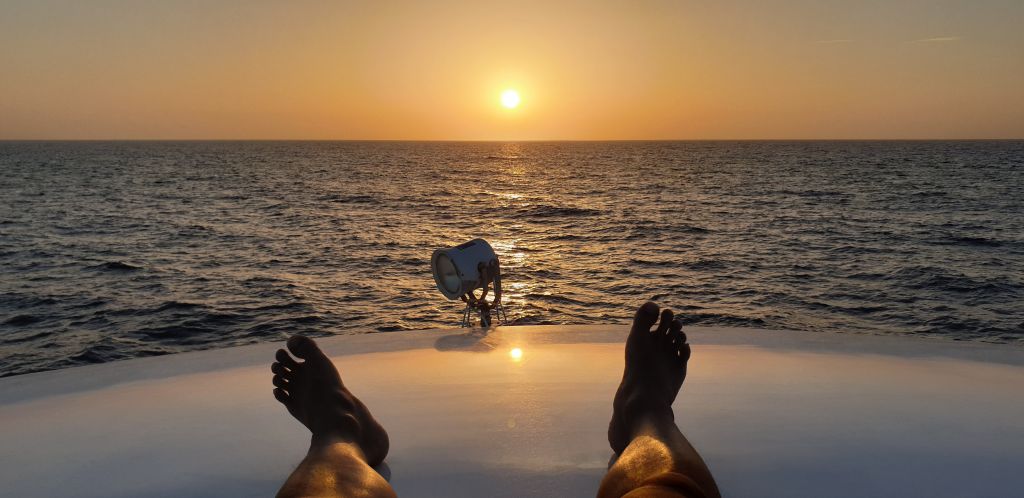
We were only 8 divers on this boat which was surprisingly amazing. I thought it would be awkward and lonely with such few people but being able to sprawl out and not fight for space was amazing. We had a varied group of largely new-ish divers from Germany. Thankfully we were all around the same age and we had an amazing time together.
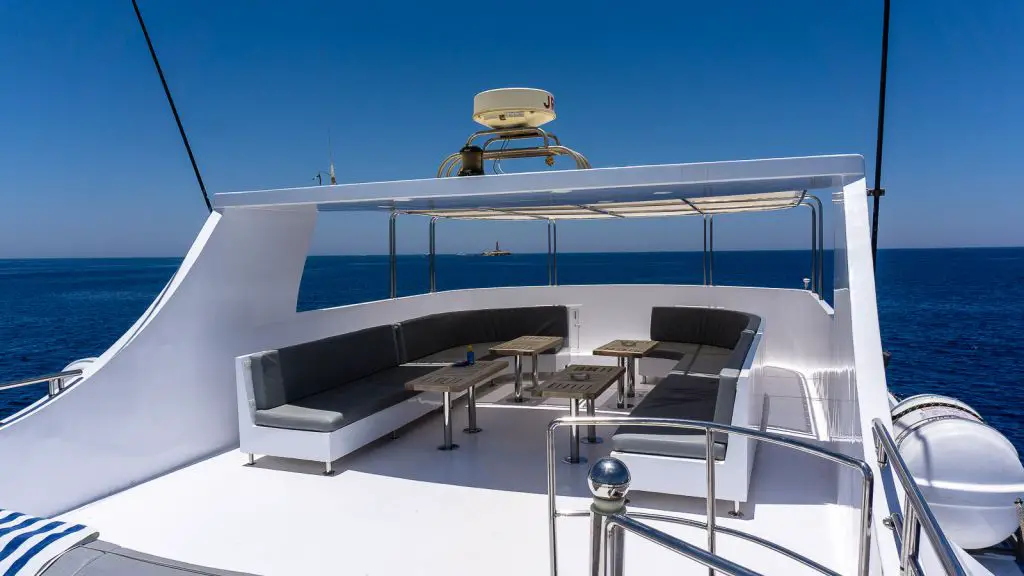
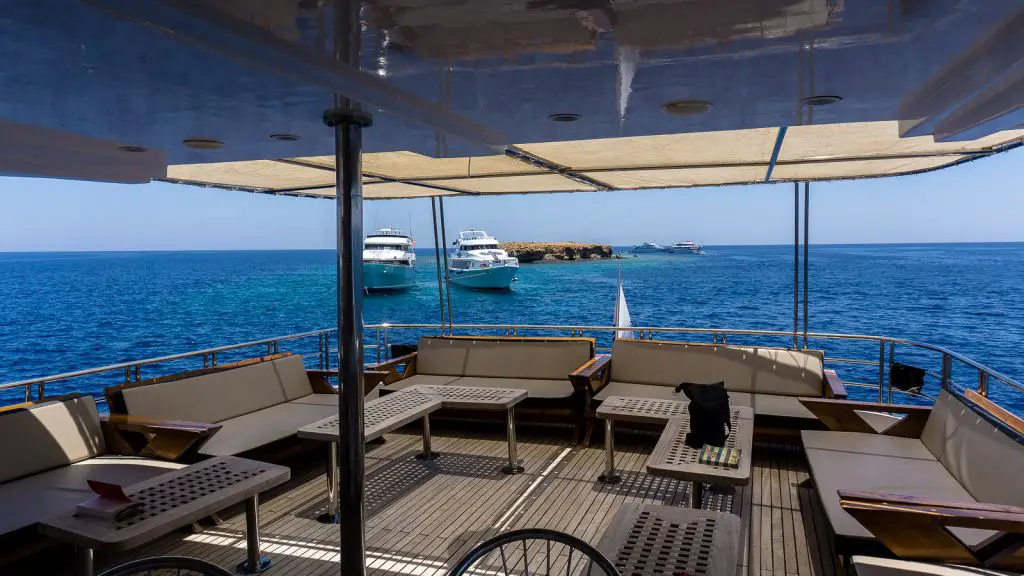
The boat and accommodations
The Samira, similar to many of the other liveaboards in the area are medium sized liveaboards equipped to carry 20 people. It was not as luxurious as my liveaboard in the Maldives aboard the Carpe Novo but it was perfect for me. I was a solo traveler this time and we were only a group of 8 divers so I had my own cabin which was fantastic.
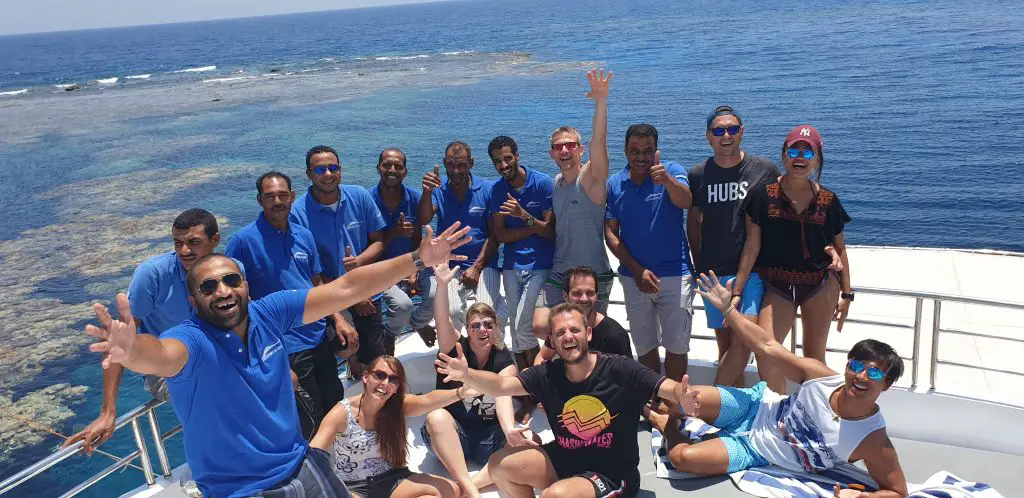
Cost of the liveaboard
One thing you’ll notice about liveaboards in the Red Sea is that they are the cheapest in the world. You can regularly find week long itineraries visiting some great sites for under €1,000 which is just insane for such quality of diving. I paid only €750 for my week which included all my diving, food, accommodations etc. as you would expect from a liveaboard. They even offered Nitrox for free which was a nice treat especially when diving so deep looking for hammerheads.
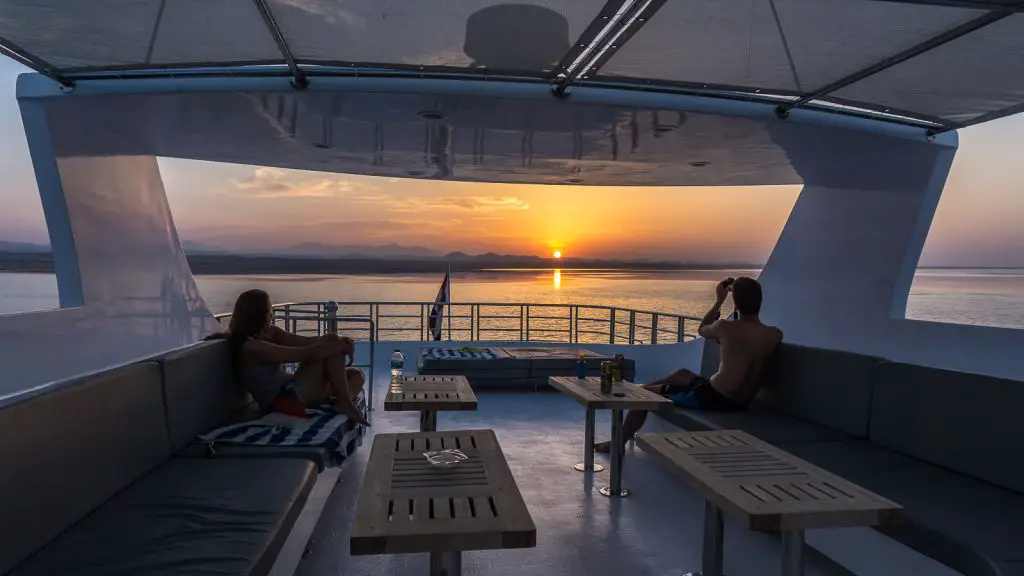

Food on the Samira Discovery
Liveaboards are known to have some delicious food aboard. It’s not like you’ll be visiting any restaurants during your stay so this is your only option. The Samira Discovery was absolutely delicious and the food was outstanding in all regards.
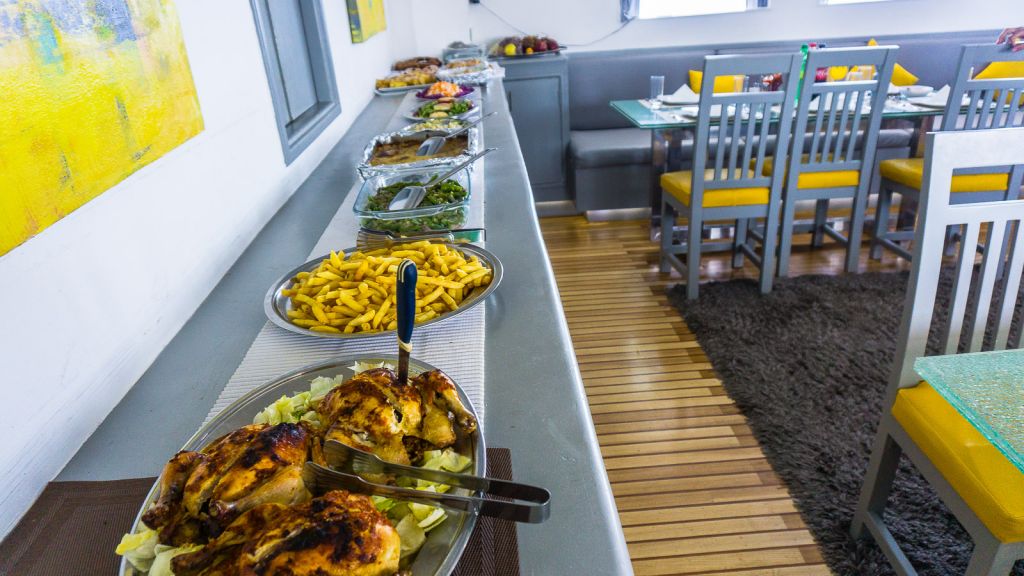

We were spoiled with delicious meals of fish, beef, chicken, and calamari accompanied with delicious Egyptian style rice. The chef also made the most delicious pastries and regularly spoiled us with amazing desserts. Breakfasts were omelets, pancakes and falafels. Meal time was definitely something none of us missed. We absolutely did not go hungry. In fact, I’m sure I gained a few pounds after this trip.
The Daily Schedule
We had 3-4 dives a day. Before every dive, we met in one of the rooms on the main boat to discuss the dive site, before jumping from the boat or boarding a smaller boat and driving out to the dive site. Our schedule fluctuated depending on the day but it went something like this:
6:00 to 6:30am: Wake up
6:30am to 7:00am: Dive briefing
7:00am to 8:30am: Get prepared, go to dive site and complete our dives
8:30 to 9:30am: Breakfast
9:30 to 10:30: Surface interval
10:30 – 12:00: Second dive briefing and dive
12:00 – 13:00: Lunch
13:00 – 14:30: Surface Interval
14:30 – 17:00: Third dive briefing and dive
19:00: Dinner
Leaving from Port Ghalib
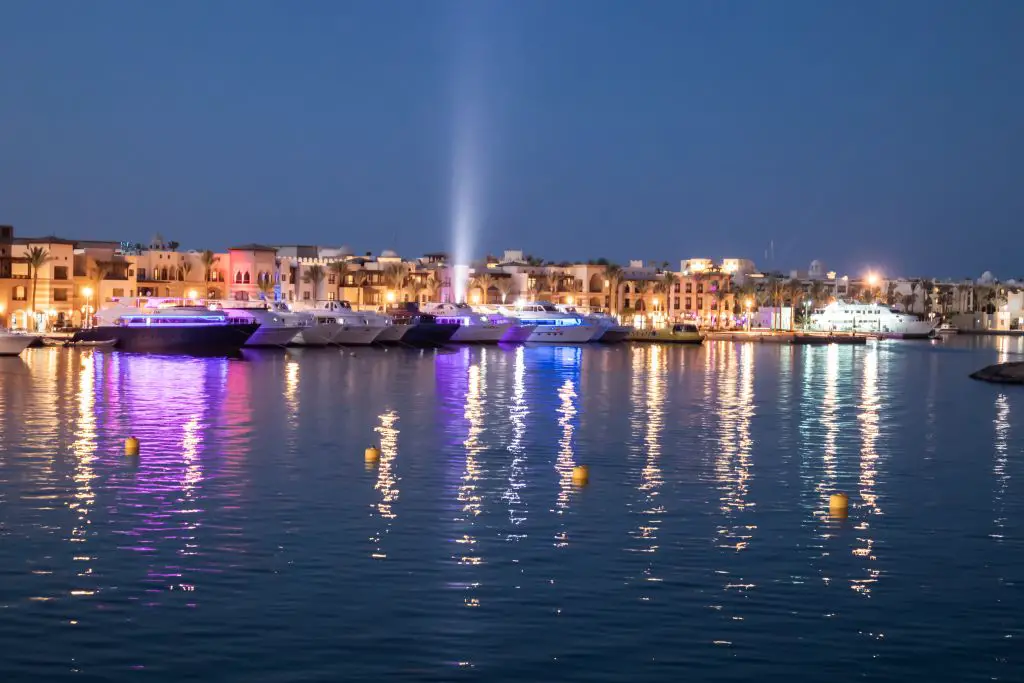
The itineraries all advertise they leave from Marsa Alam but in fact, every liveaboard leaves from the newer and larger port of Port Ghalib. In fact, the Marsa Alam airport (which I flew into), is about 5km from Port Ghalib but 50km or so to the actual town of Marsa Alam.
Port Ghalib is a new city that was designed by a Kuwaiti billionaire with far too much money. With that in mind, it is not the most charming of towns and I recommend spending little to no time in this town. Try to fly in the day your liveaboard leaves otherwise staying for more time than necessary in Port Ghalib is terrible. It embodies everything I hate, including over-glitzy all inclusive resorts with the worst types of tourists. It’s a town built purely for tourists. There are so many other more charming and cheaper places to stay at in the area with stunning beaches (the beach in Port Ghalib is terrible).
Thankfully, there was plenty of places that served shisha so I was able to get my fix(es) in before departing on the liveaboard. But honestly, Port Ghalib gets no love from me and stay far away!
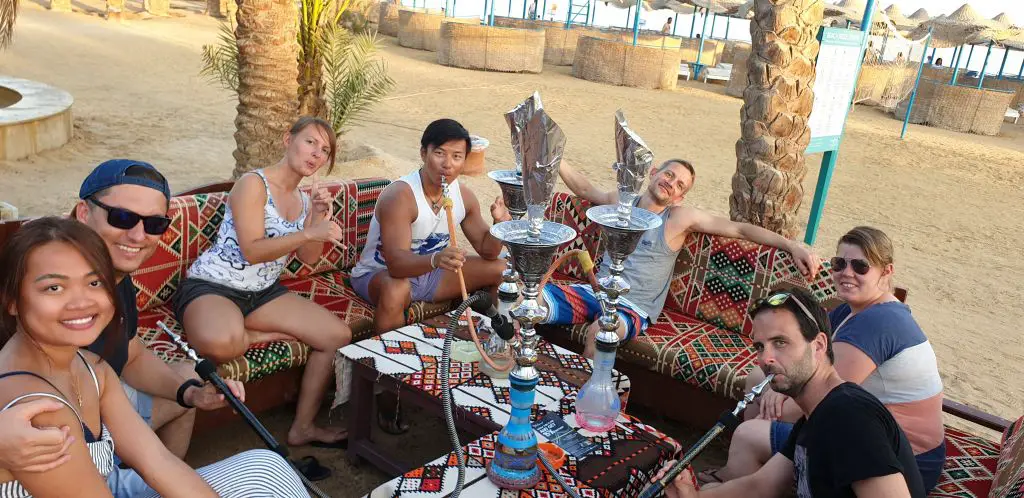
Day 2: Check dives in Ras Thomba
Our boat finally set sail the day after we checked in northward towards our first stop, Brothers Island. Before going to Brothers however, we needed to perform our check dives and we sailed about 1 hour north to Ras Thomba.
We did two check dives on the first day: Ras Thomba and Marsa Thomba. These were pretty simple dives whose purpose was not to see anything interesting but mainly to check our equipment and get comfortable for the week. THese are standard practice on all liveaboards. The next day we sailed for Brothers Island, the first highlight of our itinerary.
Day 3: Brothers Island
We sailed to Brothers overnight and arrived early in the morning in time for our dives. Being in the middle of the Red Sea, there was no longer any wifi or reception for the next few days which was quite refreshing.
The Brother Islands (El Akhawein) are the pinnacles of two undersea mountains rising from the depths of the abyss 300m deep and are located about 60 miles offshore. Big Brother, which is easily identified with it’s lighthouse, is about 100 metres across and 400 metres in length, with two extremities to the east and west. Little Brother lies about 800 metres east of Big Brother.
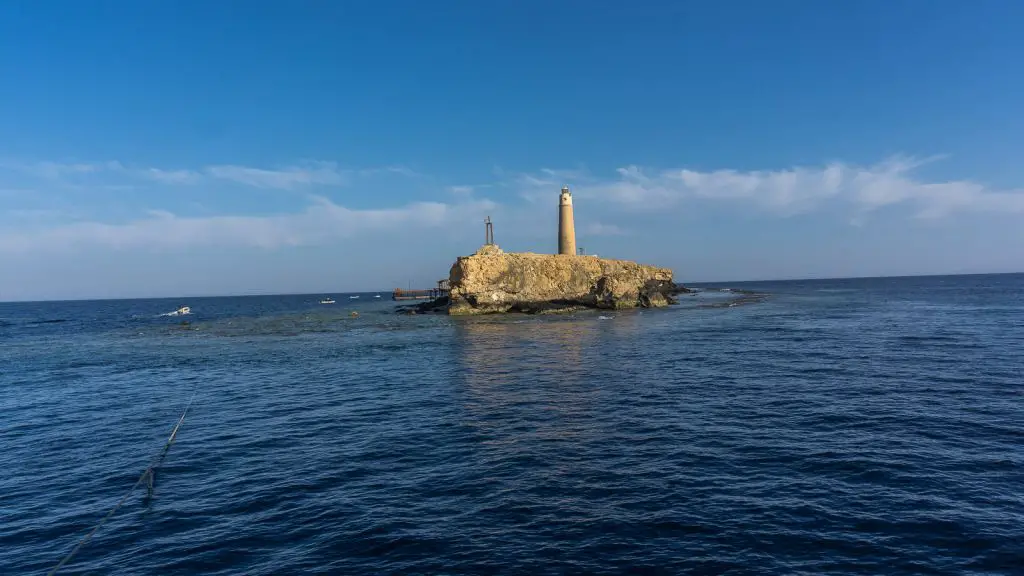
As part of the Marine Park Islands National Park, these islands offer stunning wall diving and a breath-taking display of colour with their rich variety of soft corals and gorgonians which cover the walls. You will find large and small fish here in abundance; tuna, barracuda, shoals of snappers and jack fish, as well a hammerheads, silky and oceanic white tip sharks, even the occasional thresher shark and manta ray. Sightings of the Grey Reef Shark are almost guaranteed on the North and South Plateaux of Small Brother.
Dive 1 – Big Brother
Our first dive of the day was at the Big Brother island. We were on the lookout for sharks, especially the famous gray reef sharks that frequent this area. Sadly we did not find any. However, I couldn’t help but be captivated by the amazing conditions of the soft corals all around me. This truly was an underwater paradise with huge gorgonians, endless schools of fairy basslets, jackfish, triggerfish, etc.
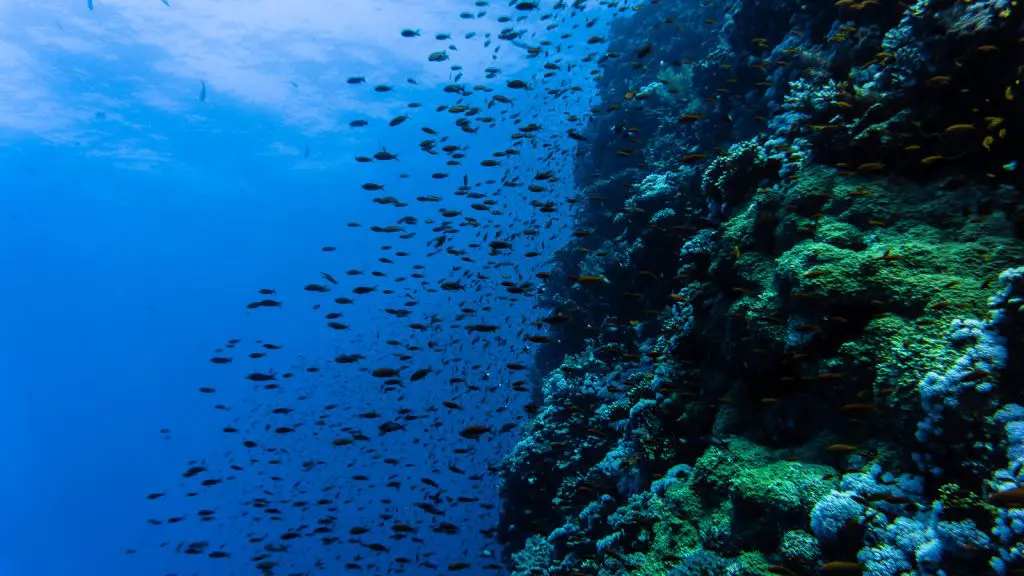
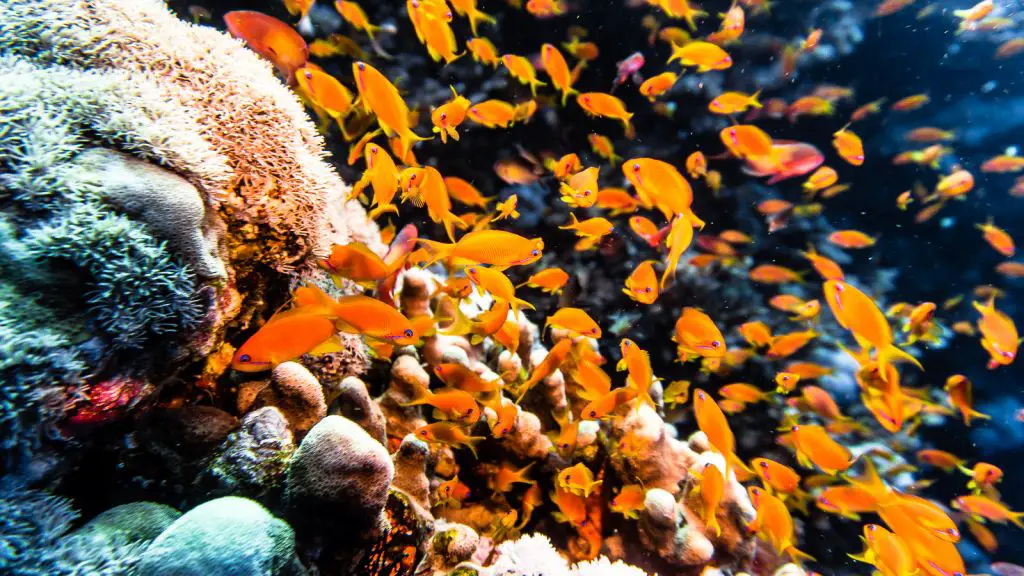
While our guide was busy looking into the blue for sharks, I was perfectly content looking taking in the breathtaking scenery. We didn’t end up finding any sharks on this dive but I was more than content looking at the beautiful coral walls.
Dive 2 and 3 – Little Brother
After our first dive of the day, we sailed a few hundred meters away to the pinnacle of Little Brother. There is no lighthouse here but the corals are in even better condition than at Big Brother.
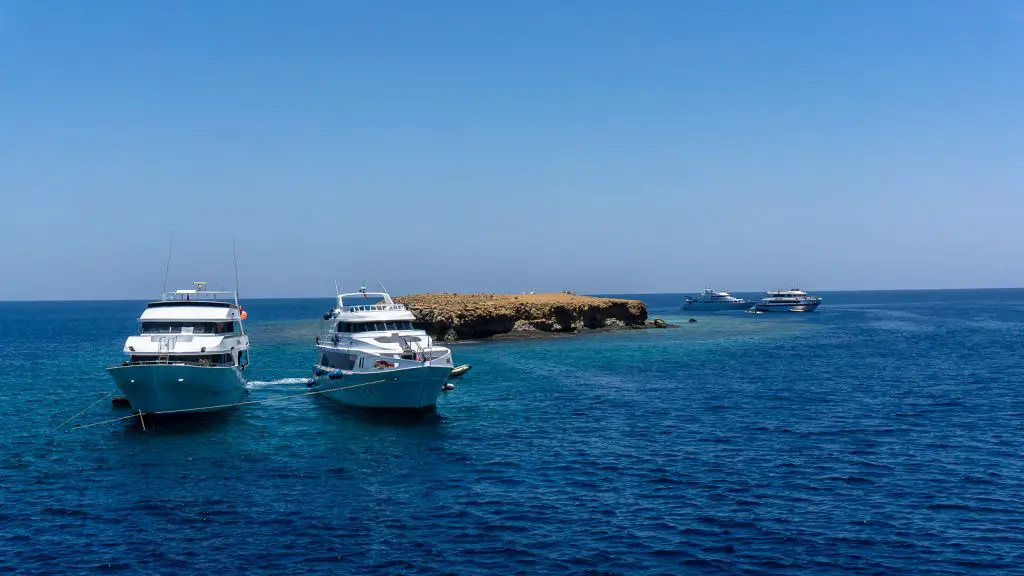
The corals and topography of Little Brother were just out of this world. I’ve dived all over the world and there are few places where the corals adre in such pristine conditions as in Little Brother. The corals were so incredibly vibrant as you would expect with Red Sea diving, but the sheer amount of different coral species here was astounding. There was almost no dead or bleached coral here either.
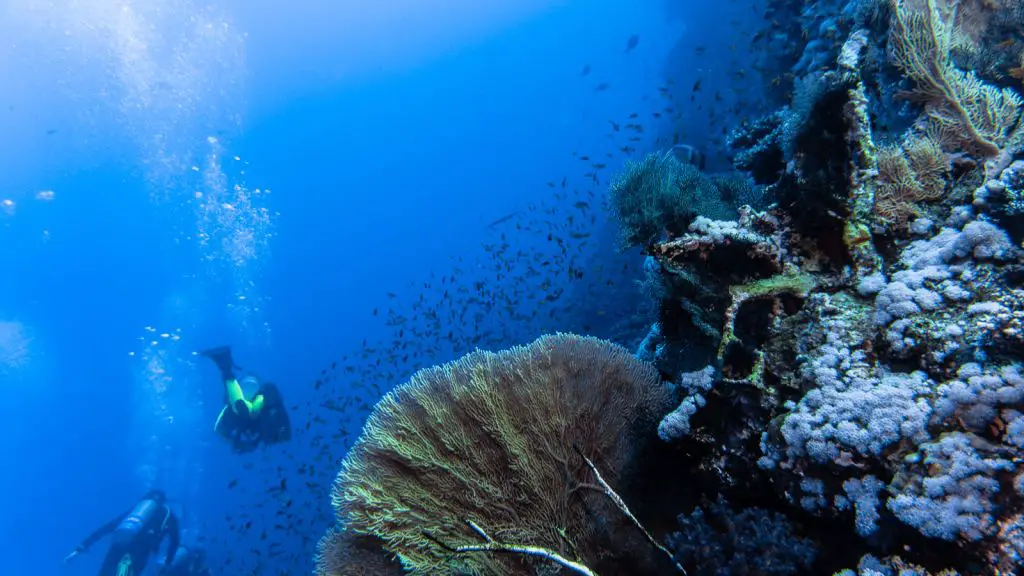
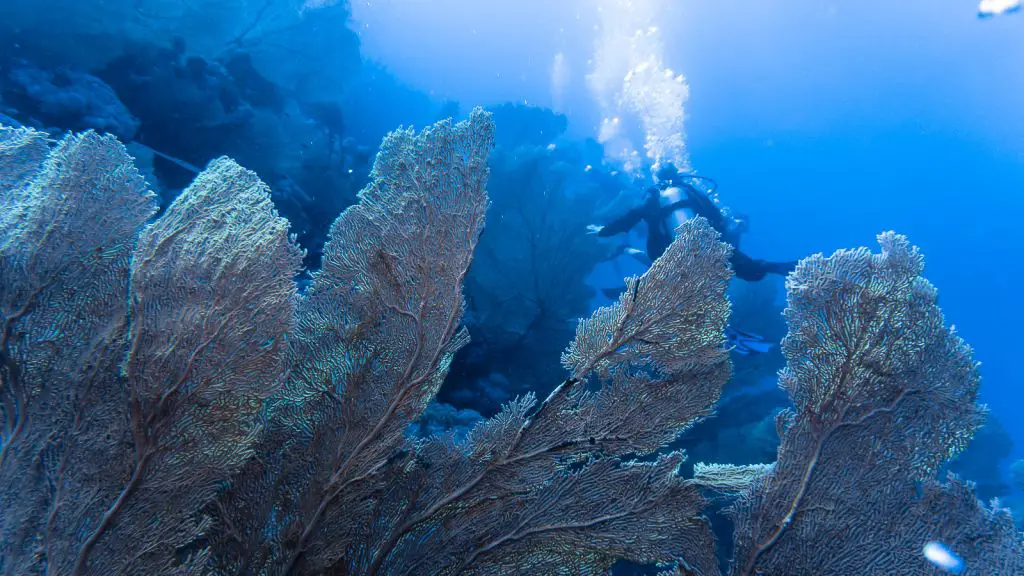
Accompanying the coral masterpiece was endless schools of red fairy basslets. These are somewhat the iconic fish on the Red Sea and they were at Little Brother in the tens of thousands. Countless other species of fish also exist here like tunas, jackfish, barracudas, snappers. We saw a gray reef shark here, as well as two big Napoleon Wrasse (my favorite) swimming about.
We did our second dive on the other side of the island which was famous for its huge fan corals at around 20-25m depth. These fans were huge and made for fantastic scenery and photos. We didn’t see any more sharks here but the scenery kept me more than engaged. I really wish I could have spent another day diving Brothers.
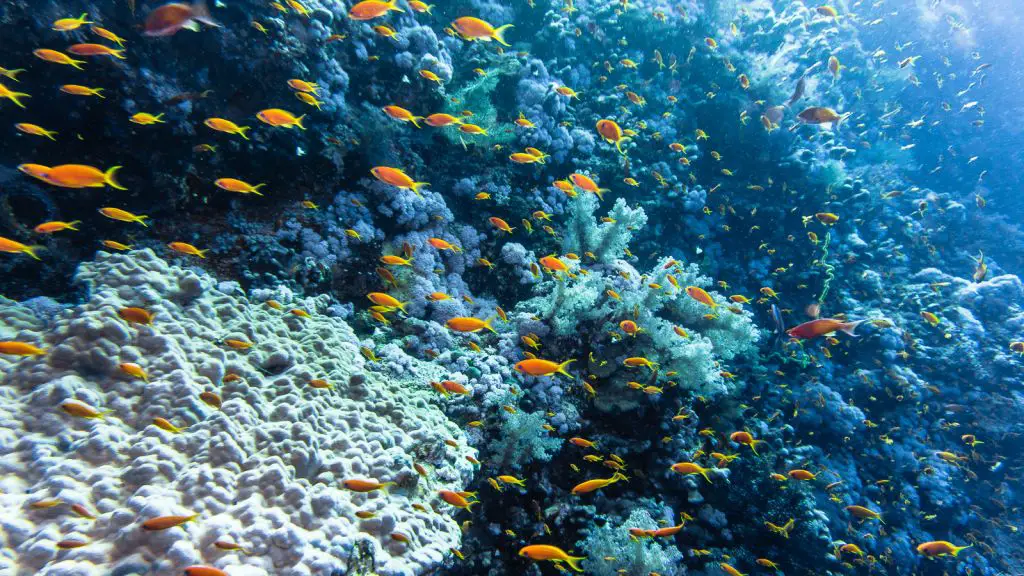
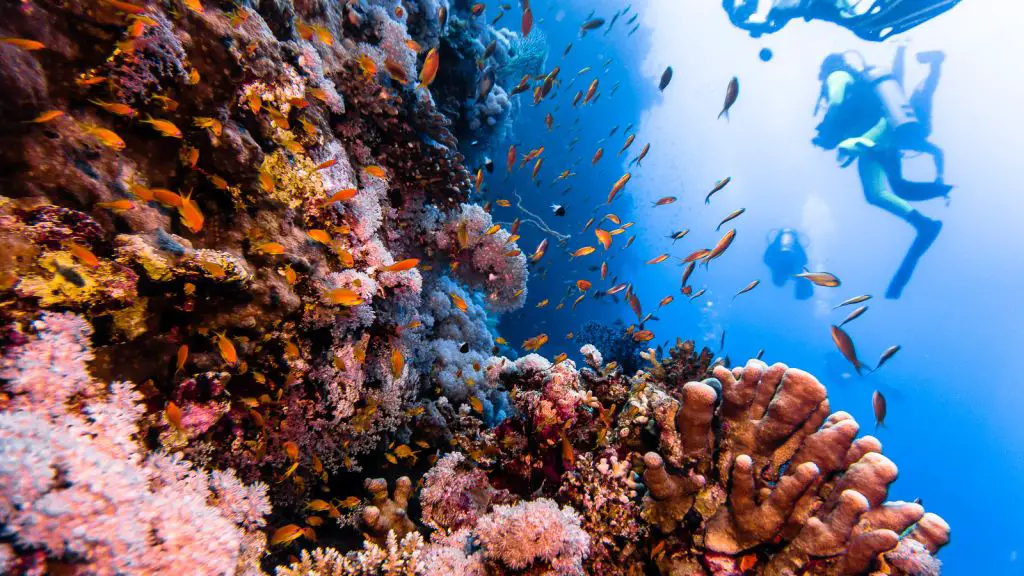
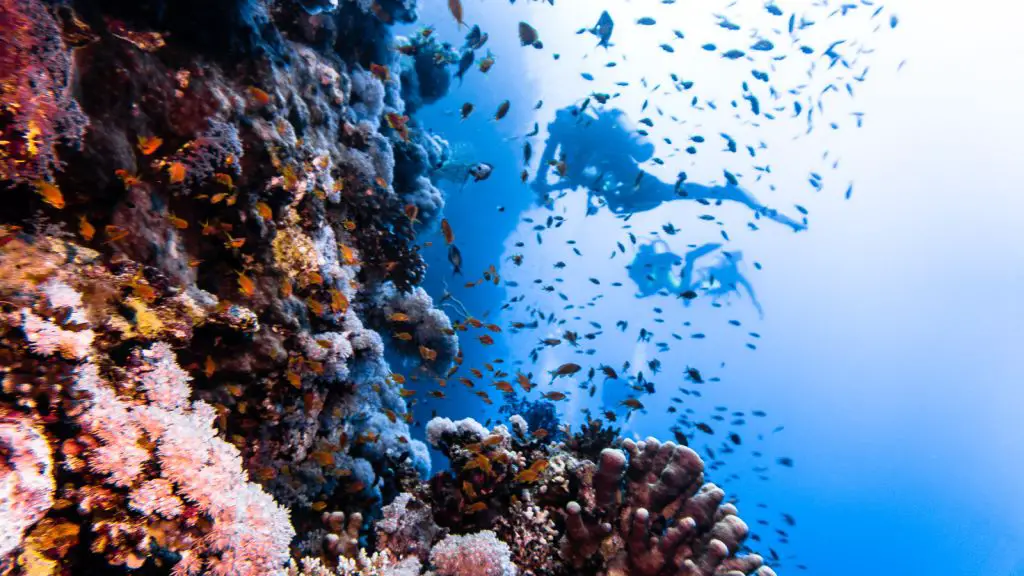
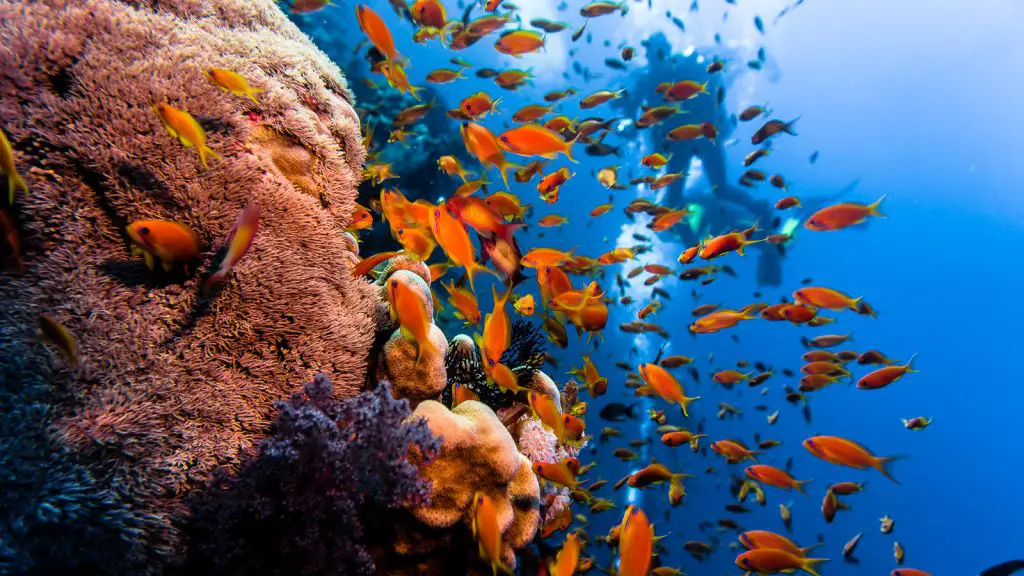
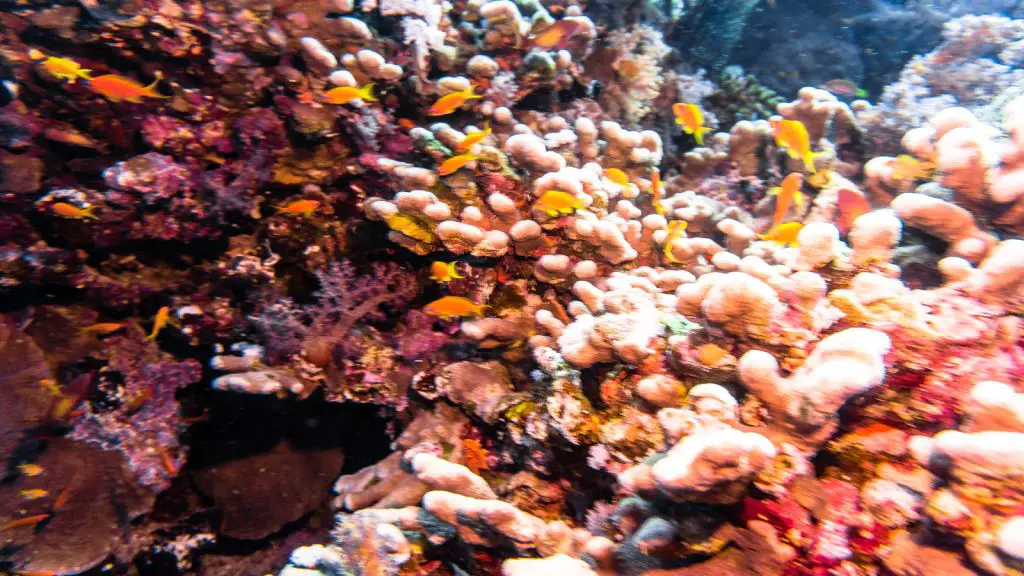
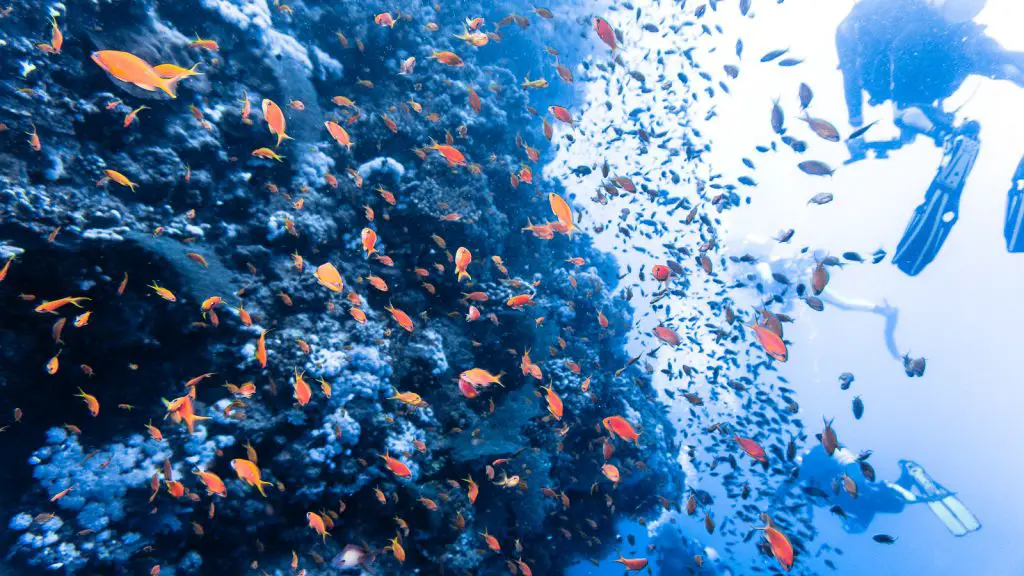
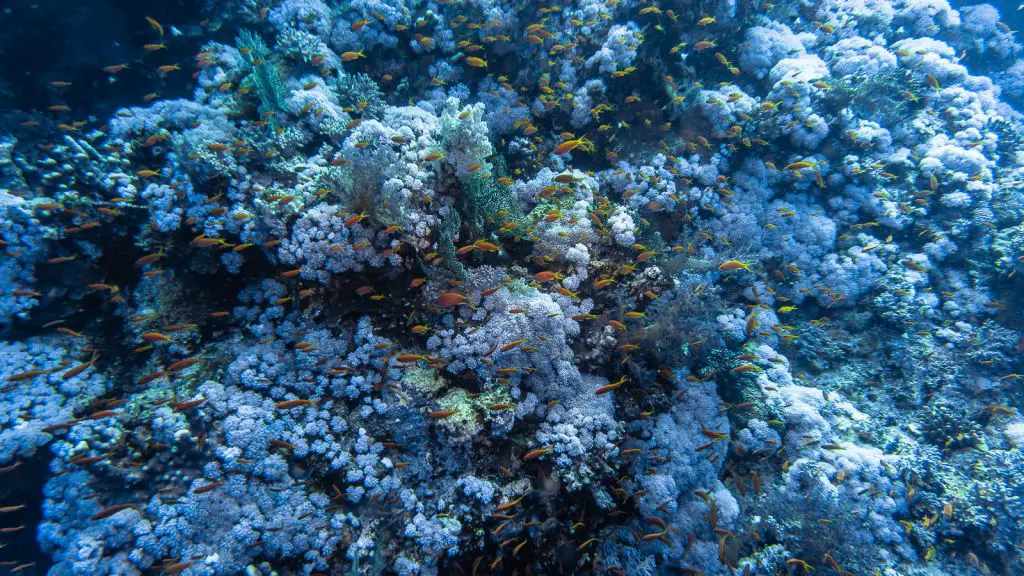
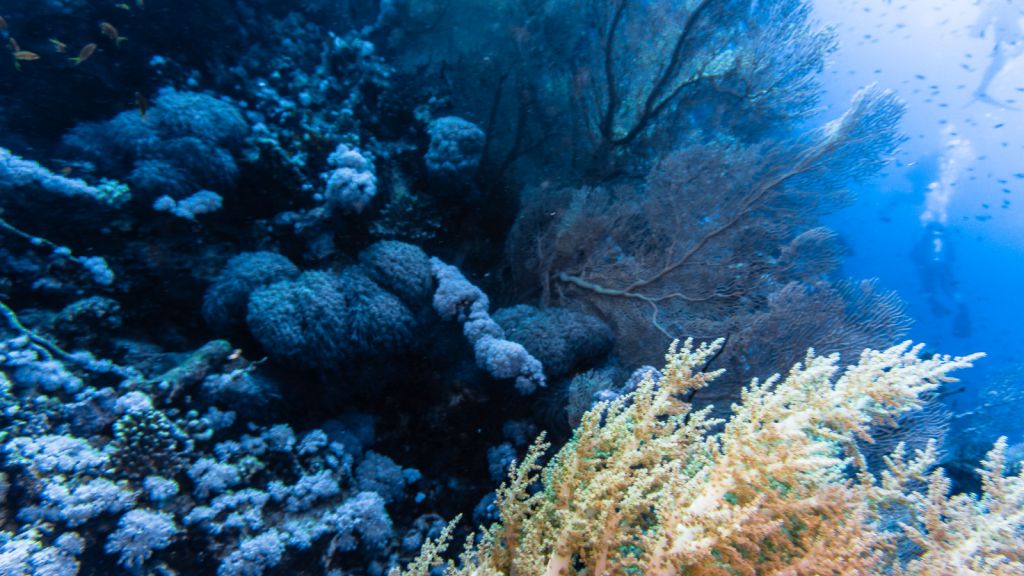
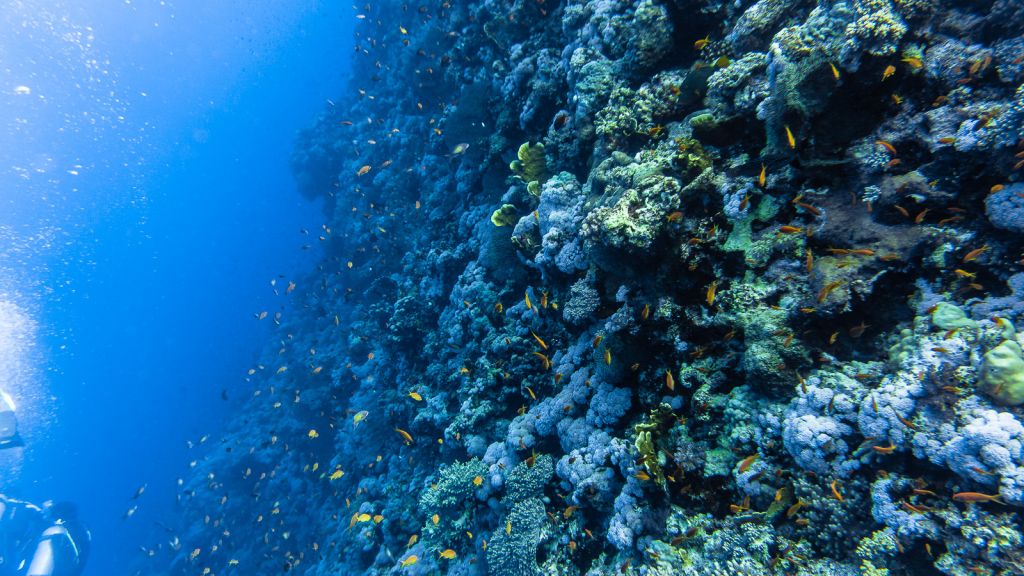
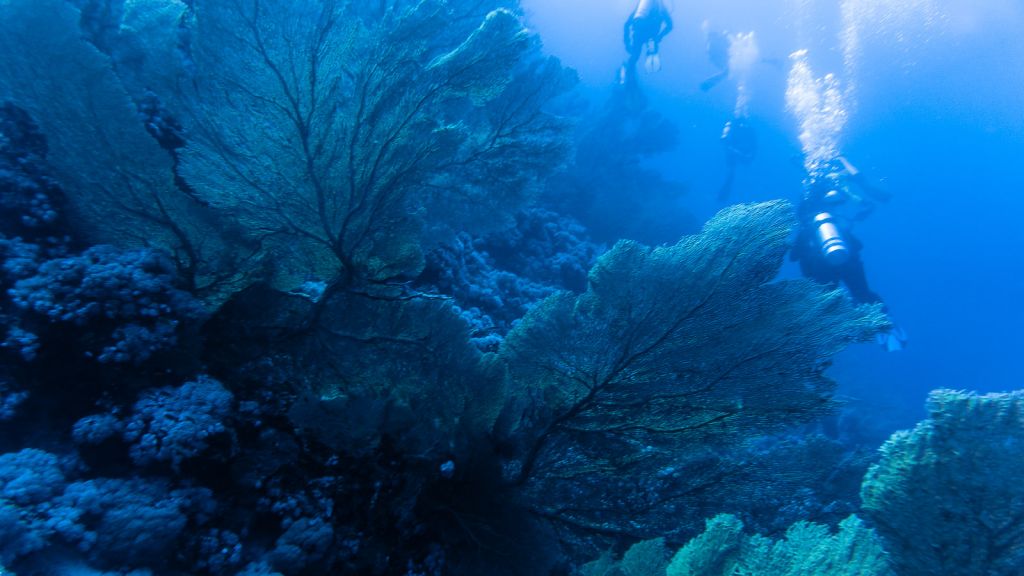
Day 4-5: Daedalus Reef
Located 80km east of Marsa Allam, this isolated offshore reef offers some of the more impressive dives in the Red Sea. Less than a kilometre wide, the reef is adorned with coral walls and filled with a handsome variety of typical Red Sea species. Always remember to keep an eye in the blue where anything can be passing by; oceanic white tips, thresher sharks, mantas and reef sharks are often spotted there. Daedalus is especially known for scalloped hammerhead sharks (unlike the Great hammerheads I saw in Little Cayman) which during the summer months can be seen in large schools. Above ground, the dive sight is known by its iconic lighthouse.
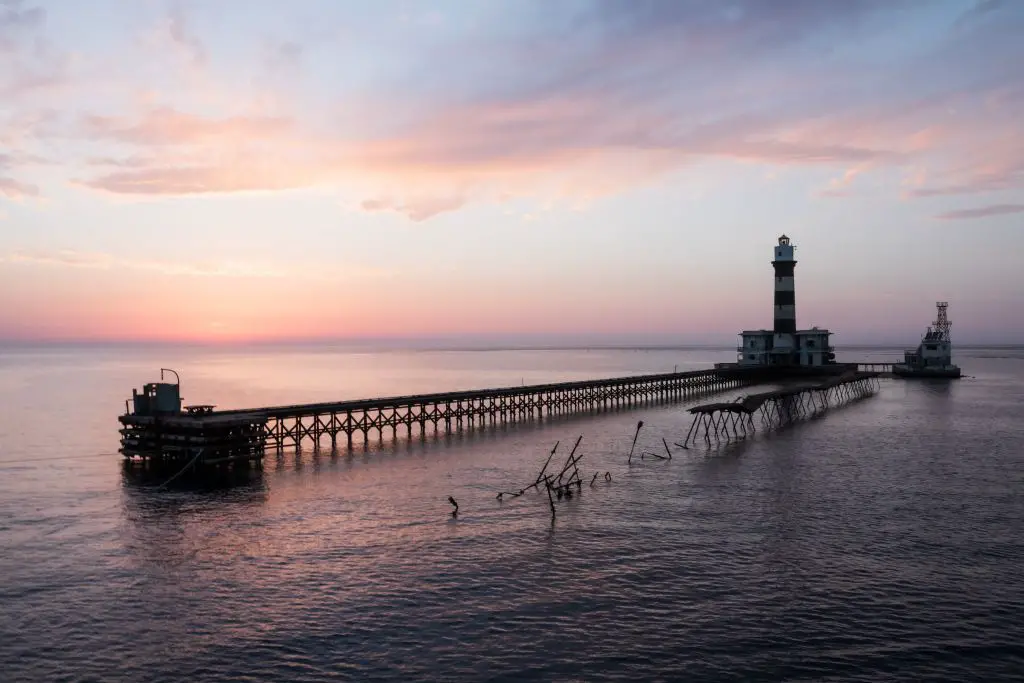
Also located on Daedalus reef is the Zealot, a loaded cargo ship from the late 1880s. Beginning at 75m and plunging deep down to 110m, this site is exclusive to advanced, technical divers.
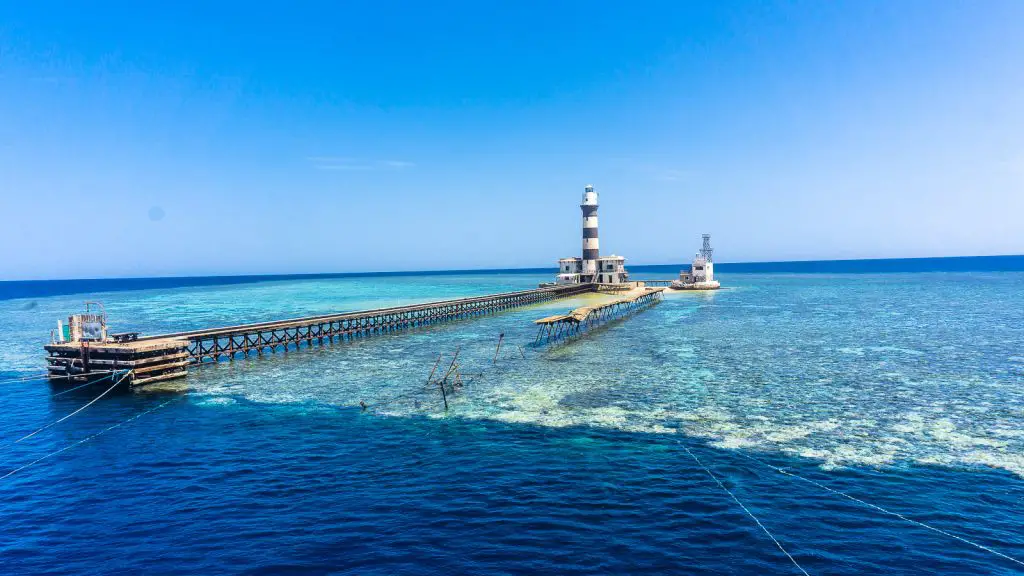
While Daedalus is well known for its hammerhead schools, it is not a year round thing. Seasonality plays a big part in seeing schooling hammerheads at Daedalus. The high season for prime hammerhead viewing is in the summer months from June to September. As part of our trip, we spent two full days here looking for hammerheads!
Dive #1-3 – Daedalus Reef day 1
After Brothers, we immediately sailed overnight for Deadalus. This site is famous for its schools of scalloped hammerheads. These are the smaller of the hammerheads (Great hammerheads being the largest). In peak season, you can see schools of a hundred of these beauties.
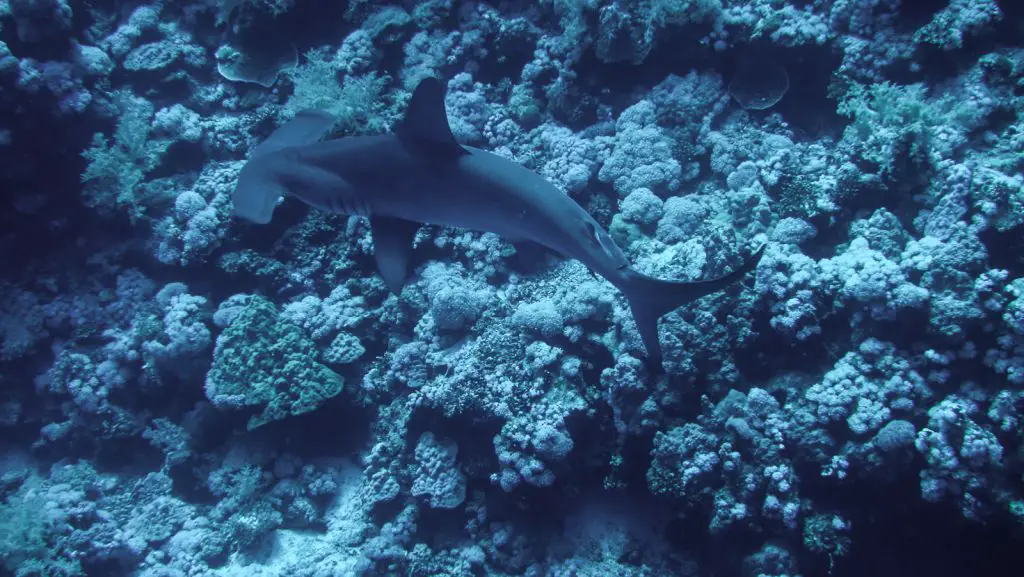
From conversations with the dive guides, sharks used to come here in abundance almost year round but nowadays, it is largely limited to summer months which was a bit sad.

For the most part, the dives here are all pretty similar in terms of topography with the main goal being finding hammerhead sharks. The reefs are still quite nice, although not nearly as nice as Big & Little Brother from the previous day. There are still schools for the red fairy basslets, jacks, trevalis, and the occasional Napoleon Wrasse hanging about.
On our first day, we started by diving the North side of the wall. We saw one hammerhead in the distance but that was it. The rest of day 1 would be us looking for sharks but unfortunately not finding any.
Dive #4-6 – Daedalus Reef day 2
The second day, we decided to wake up extra early to be the first boat out. We were at the dive sight by 5:30 just as the sun was coming up and were the first ones in the water.
After swimming for a few minutes, this paid off because we were greeted with 3 hammerheads swimming together! They followed us for some time and it was just breathtaking watching these beautiful animals swimming about. I always think hammerheads are the most badass looking sharks because of their distinctive T heads. They look dangerous but in fact have some of the smallest mouths for a shark of its size. We spent the rest of the dive following these guys around.
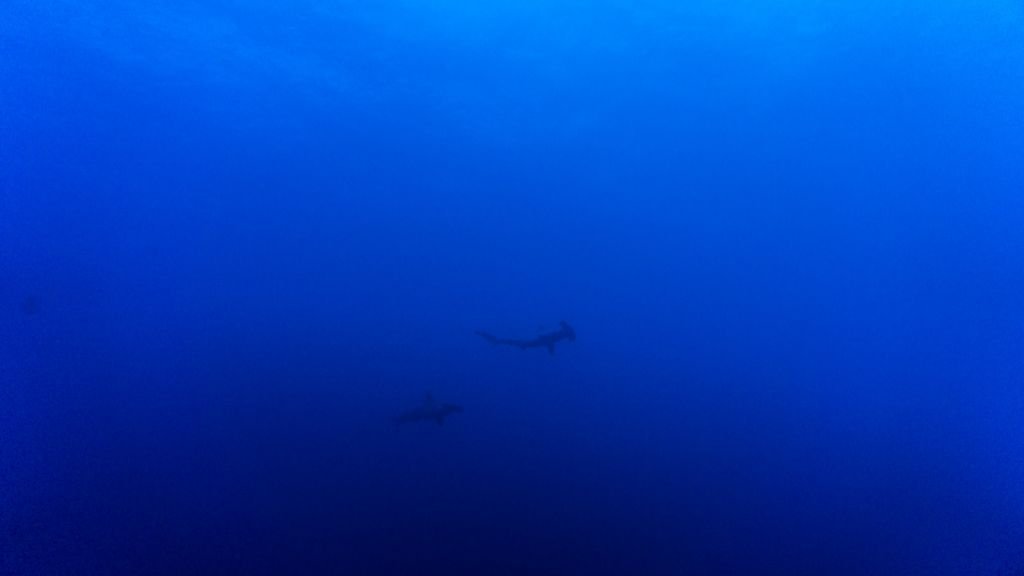
We also saw a bunch of my favorite fish, the Napoleon Wrasse. Groups of them followed us around and one of them almost swam into me.
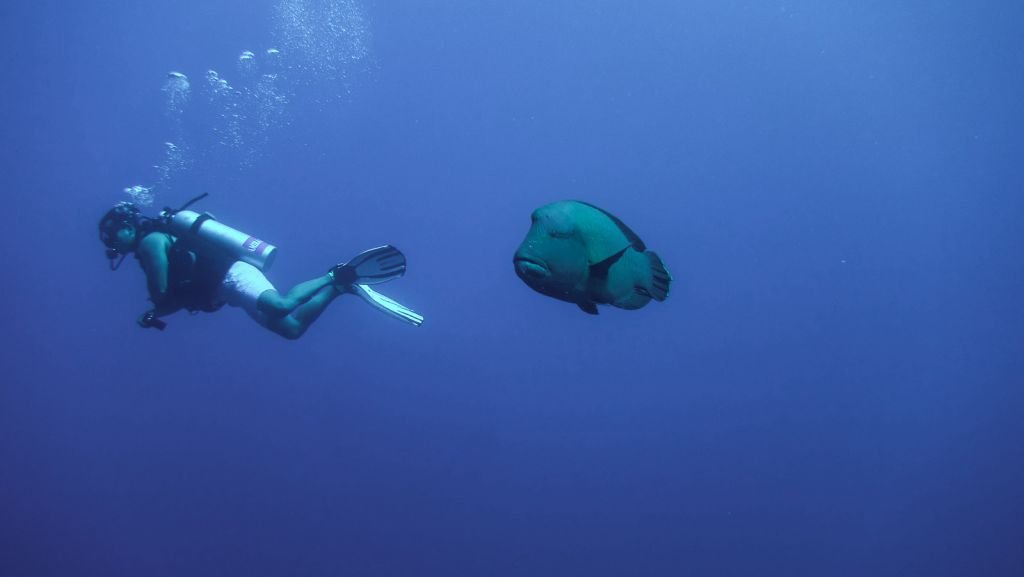
The next two dives of the day were mostly focused on looking for hammerheads. We saw 5 more hammerheads making our total count just shy of 10. We never got to see them in the big schools that the dive site is famous for. Two weeks after our trip in early July, we heard of a group seeing a big school of hammerheads in Daedalus and here is the footage to prove it!
Day 6: Elphinstone Reef
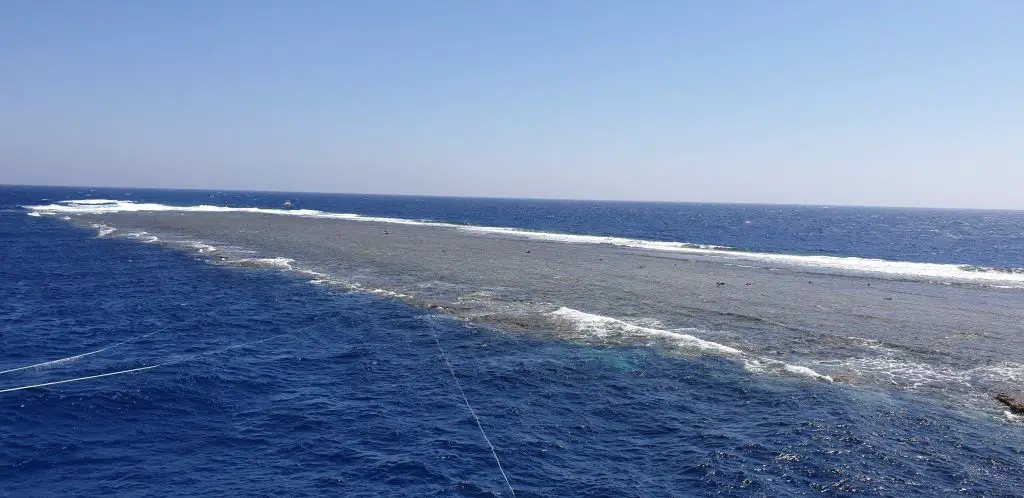
The Elphinstone reef is located 12km offshore and about 30km from Marsa Alam. Famous for drift dives, these take you along the wonderful deep walls, rich with coral. This was the last major stop on our liveaboard itinerary. After finishing up our hammerhead dives in Daedalus, we sailed for most of the night to reach Elphinstone reef. This was also the first time we had any reception since we left for Brothers Island. It was quite nice not having any reception I must say.
We all know Elphinstone is amazing and very cool underwater but I thought it was pretty amazing above water too. you have a huge coral formation that resembles a little sandbar. We spent three dives circumventing the edges of this formation. The reef at this site was at least more interesting than at Daedalus, and there was some more interesting things to see like the giant napoleon wrasses, but no sharks unfortunately. I was hoping to see a white tip or any sort of reef shark but it was not to be. The corals were in excellent condition however, especially in the area
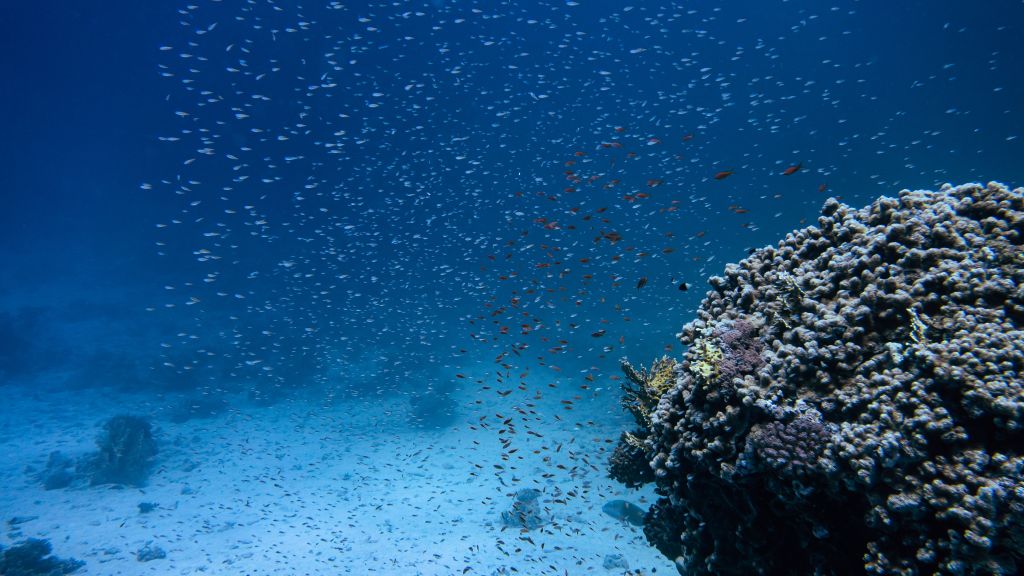
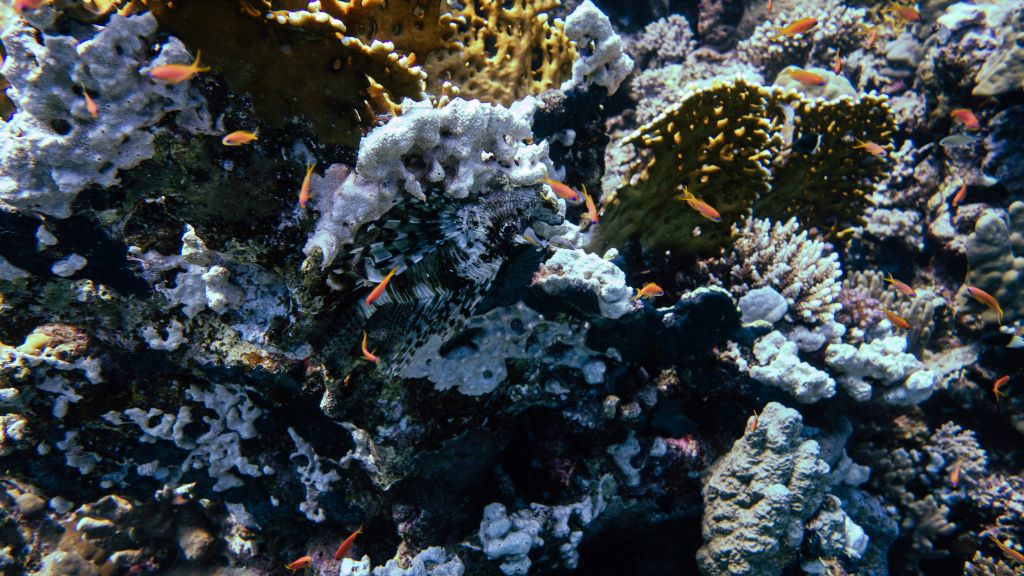
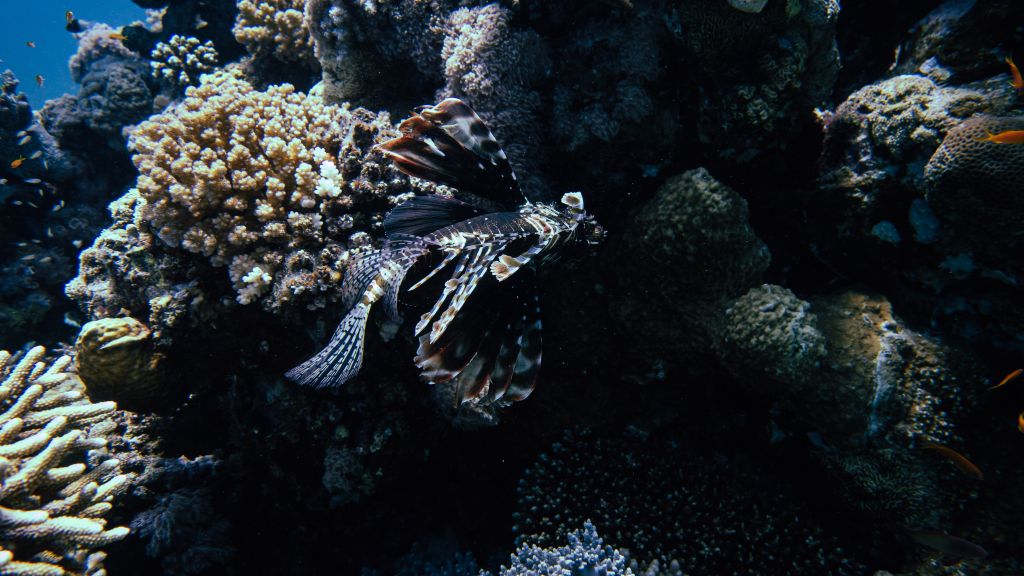

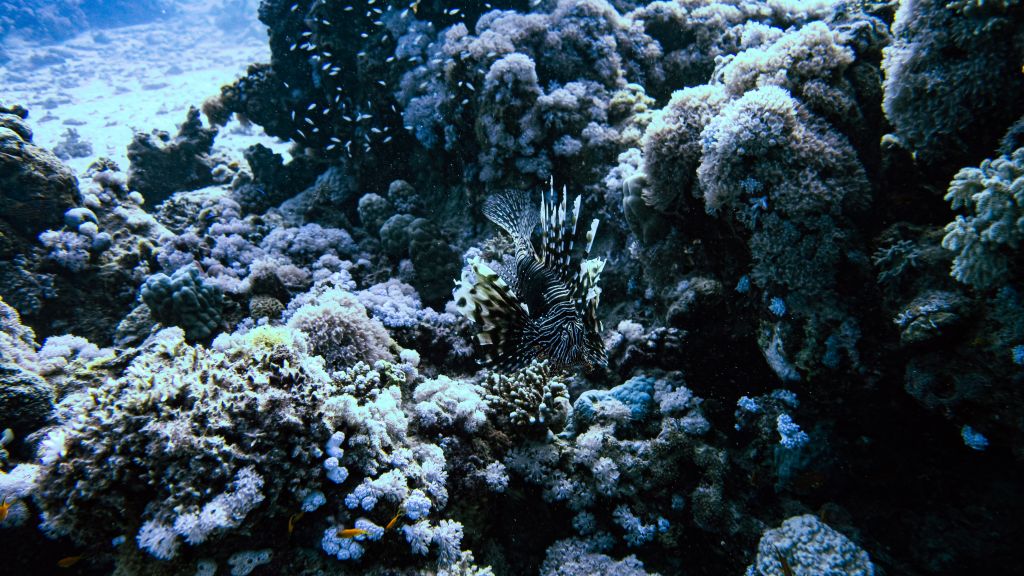
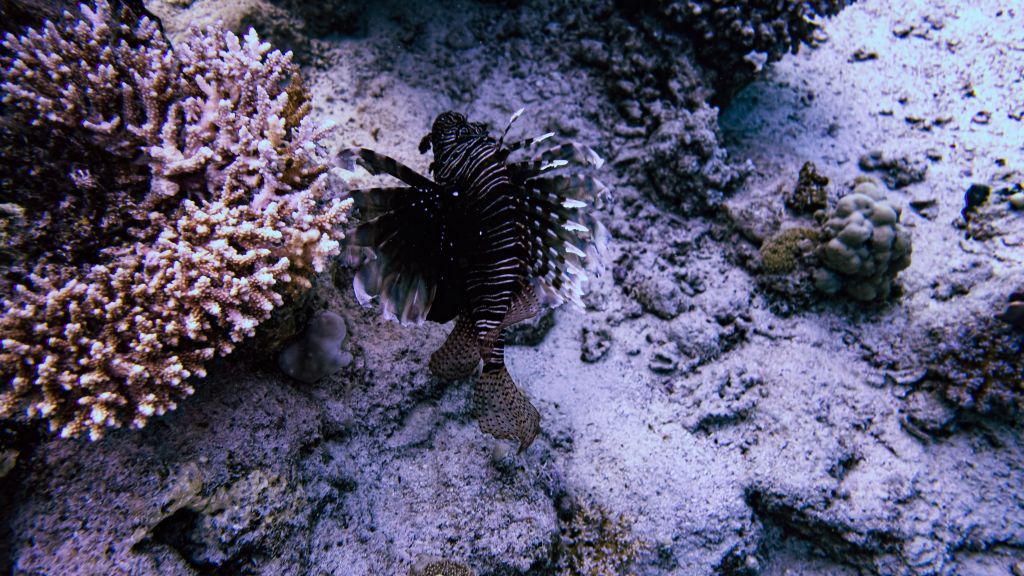
Day 7: Diving near Marsa Alam
After Elphinstone, we sailed back towards Port Ghalib and spent our last day diving near the shore in the pinnacles of Abu Dabab. Abu Dabab is a collection of 6 pinnacles portruding from the ocean floor. The reefs are in great condition here and there are some wonderful hard coral formations abound.
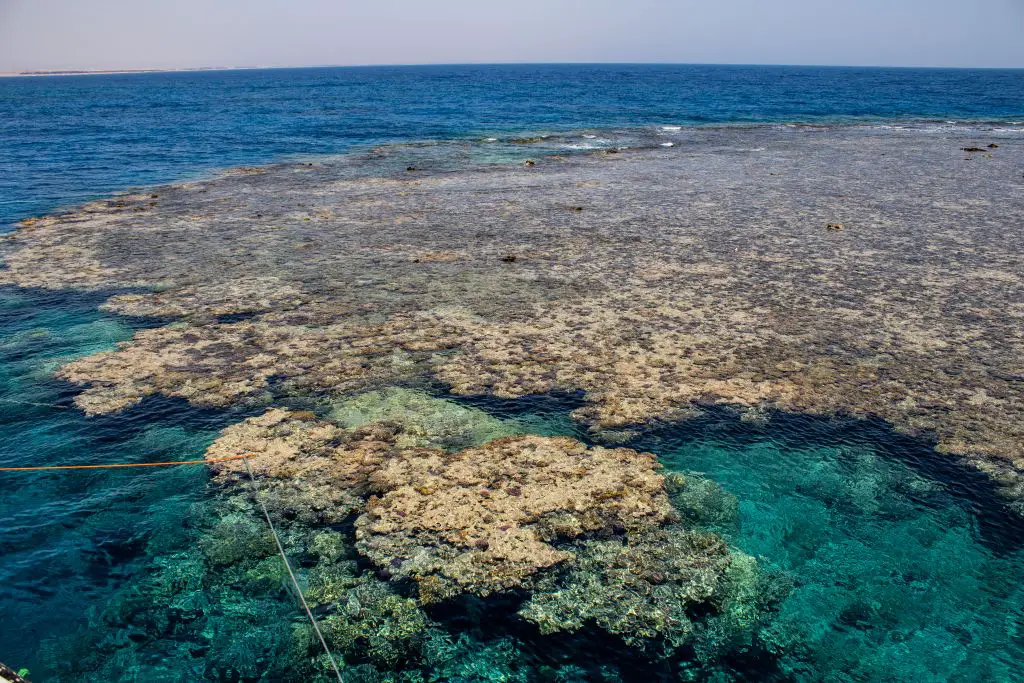
We did 3 day dives as well as a night dive in Abu Dabab. We did self guided dives here as the sandy bottom and the topography of the area makes getting lost difficult. I ended up putting my divemaster skills to use and guided most of the groups. Our liveaboard was very on top of things and ready to go if you were lost and had to surface with a SMB. This hilariously happened to some divers on the boat!
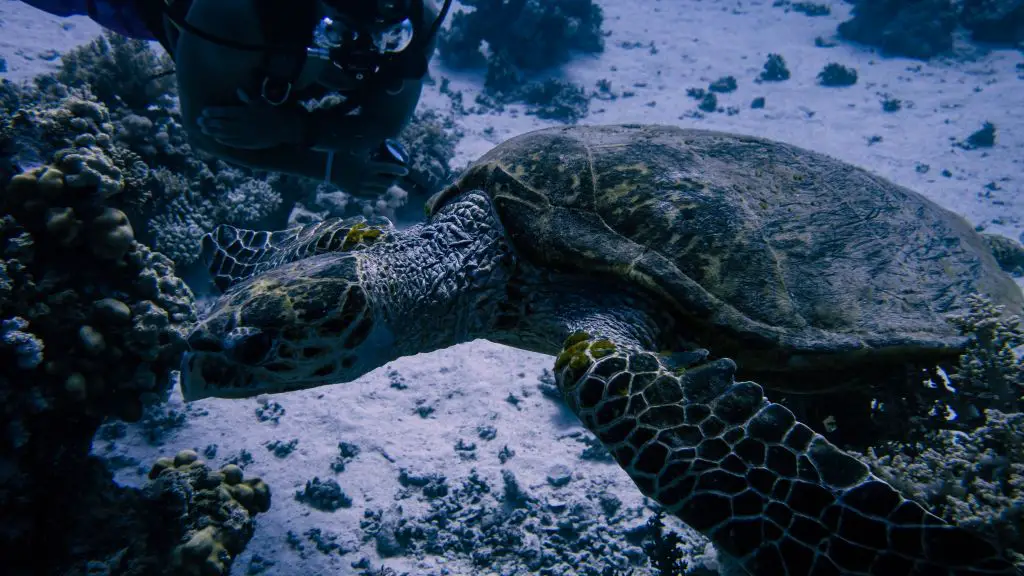
The diving here in Abu Dabab is not bad but nothing close to the diving we did further out into the sea. The reef quality at Brothers Island can’t be matched but Abu Dabab as a day dive from Marsa Alam would be fantastic. We saw a nice juvenile eagle ray that gave us a show along with turtles, barracudas, lionfish and more.
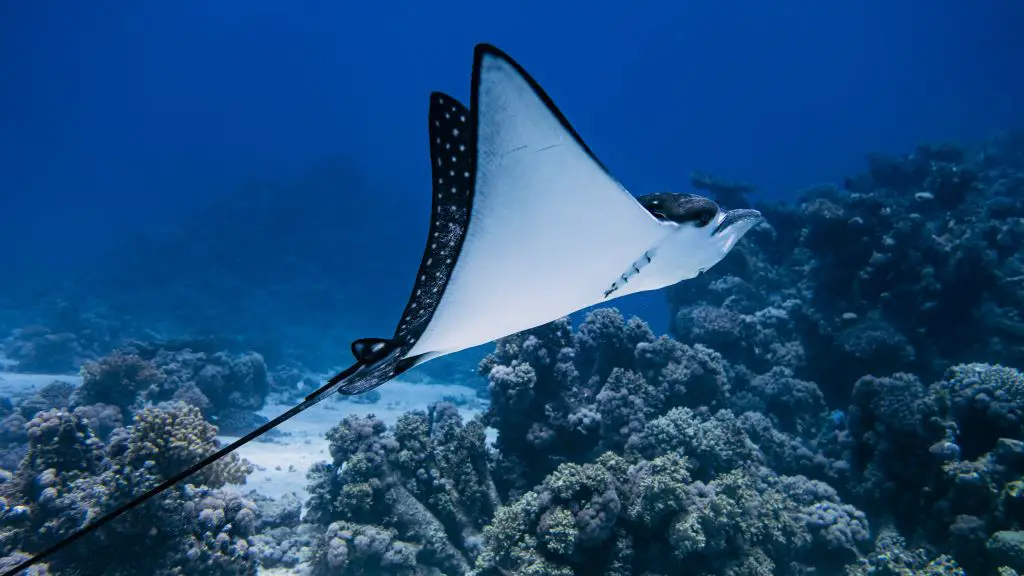
Day 8: Back to Port Ghalib
We arrived into port the next morning after a great week out at sea. I would definitely come back and try this itinerary again in July or August when hammerheads are more common. There are also numerous other itineraries in the South of Egypt including Fury Shoals, St Johns and more. Even further south in Sudan is supposed to be some even more spectacular and untouched dive sites! All in all an amazing trip!
